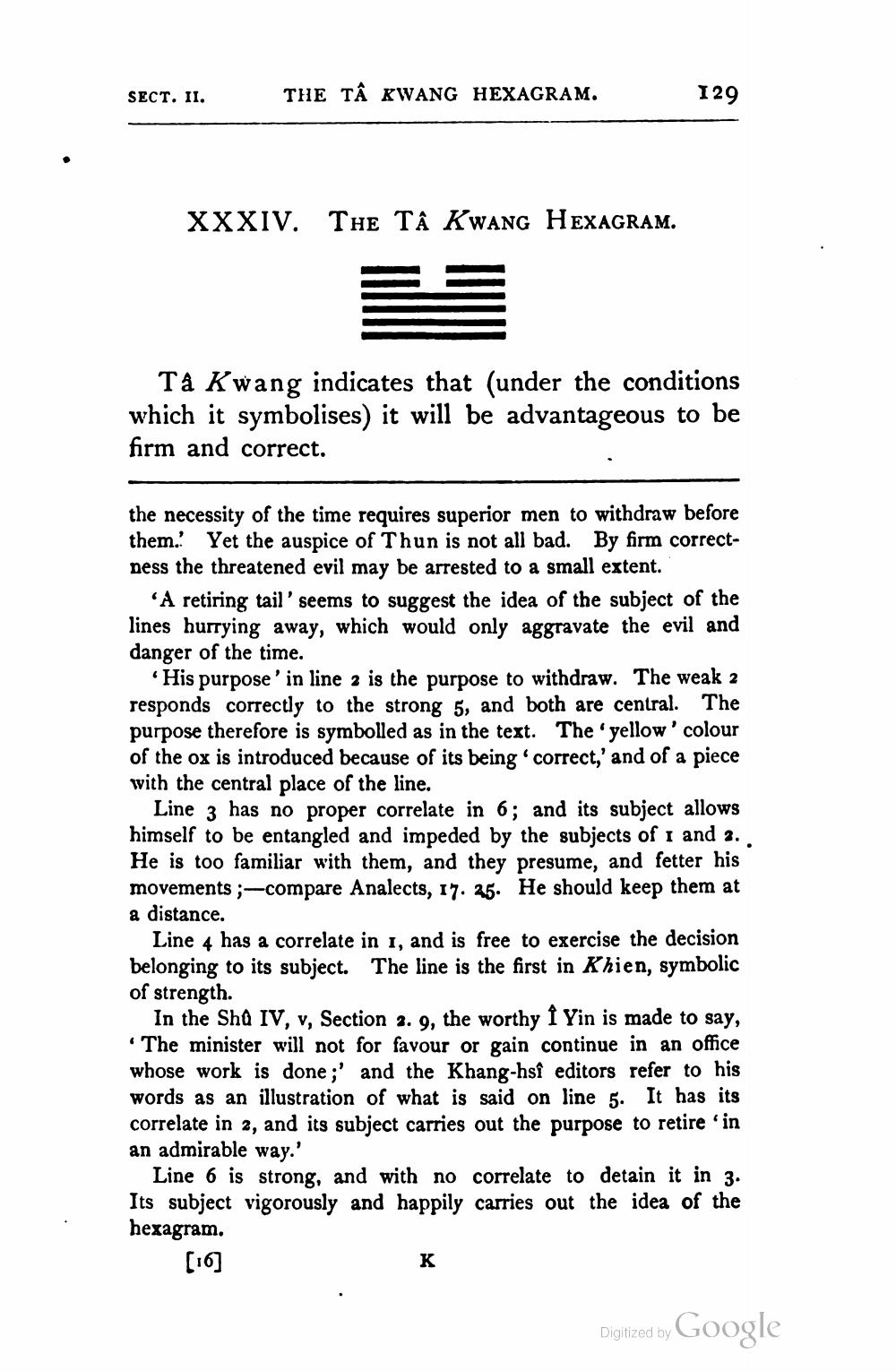________________
SECT. II.
THE TA KWANG HEXAGRAM.
129
XXXIV. THE TA KWANG HEXAGRAM.
Tá Kwang indicates that (under the conditions which it symbolises) it will be advantageous to be firm and correct.
the necessity of the time requires superior men to withdraw before them. Yet the auspice of Thun is not all bad. By firm correctness the threatened evil may be arrested to a small extent.
A retiring tail' seems to suggest the idea of the subject of the lines hurrying away, which would only aggravate the evil and danger of the time.
His purpose' in line 2 is the purpose to withdraw. The weak 2 responds correctly to the strong 5, and both are central. The purpose therefore is symbolled as in the text. The yellow' colour of the ox is introduced because of its being correct,' and of a piece with the central place of the line.
Line 3 has no proper correlate in 6; and its subject allows himself to be entangled and impeded by the subjects of 1 and 2. He is too familiar with them, and they presume, and fetter his movements ;-compare Analects, 17. 25. He should keep them at a distance.
Line 4 has a correlate in I, and is free to exercise the decision belonging to its subject. The line is the first in Khien, symbolic of strength.
In the Sha IV, V, Section 3. 9, the worthy I Yin is made to say, The minister will not for favour or gain continue in an office whose work is done;' and the Khang-hsî editors refer to his words as an illustration of what is said on line 5. It has its correlate in 2, and its subject carries out the purpose to retire 'in an admirable way.'
Line 6 is strong, and with no correlate to detain it in 3. Its subject vigorously and happily carries out the idea of the hexagram. [16]
K
Digitized by Google




